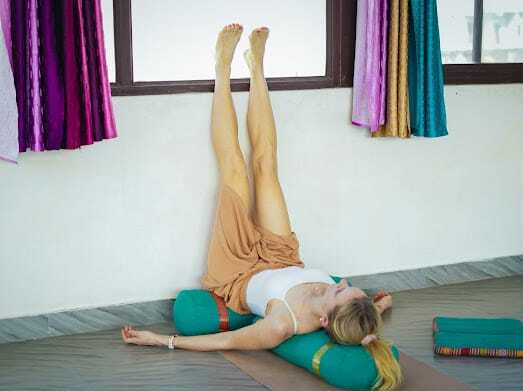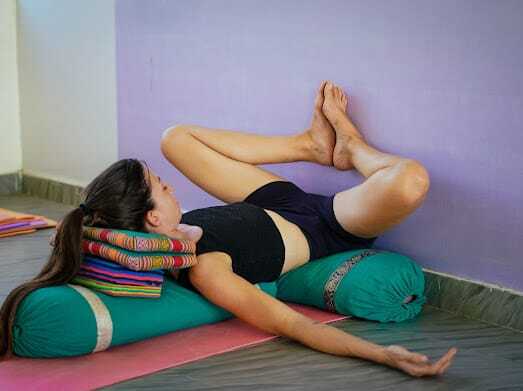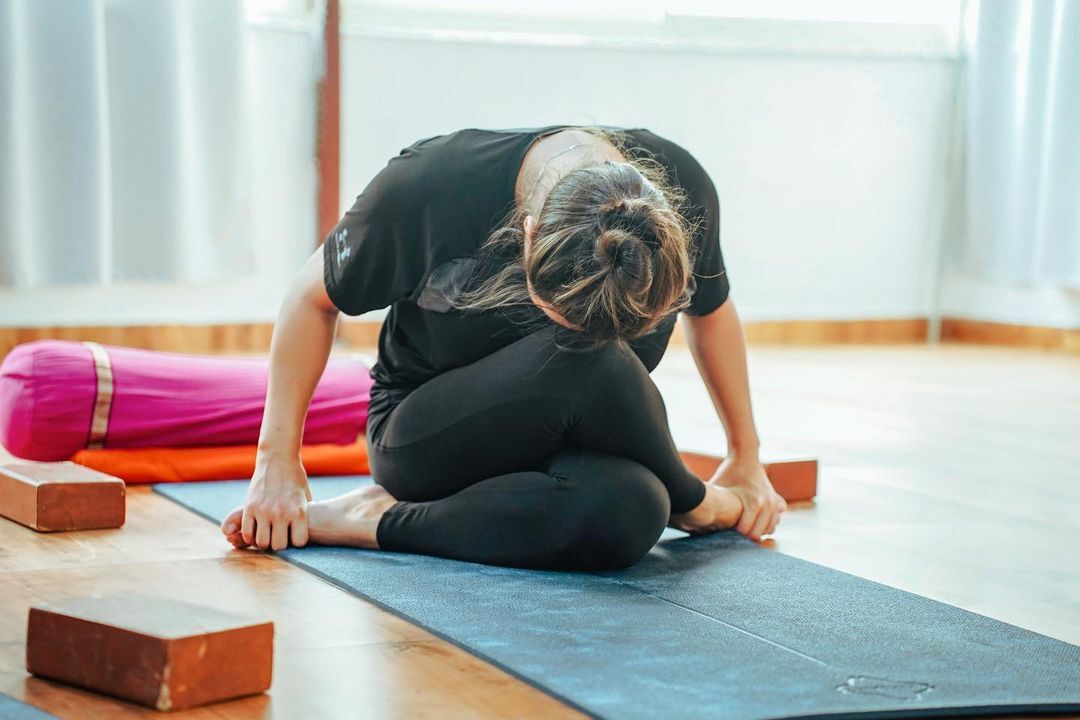Yoga, in its many forms, offers various approaches to movement, breath, and stillness. Among the wide range of practices, Yin Yoga stands out for its gentle pace, extended postures, and deep inward focus.
While more dynamic styles of yoga build strength and flexibility through movement, Yin Yoga provides a counterbalance by targeting the deeper layers of the body and offering space for mental stillness.
In this article, we’ll look into what Yin Yoga is, how it works, and how it differs from other popular yoga styles.

What Is Yin Yoga?
Yin Yoga is a slow-paced style of yoga where postures are held for longer periods, typically between two to five minutes or even more. It is rooted in the principles of traditional Chinese medicine and focuses on the body’s connective tissues, including fascia, ligaments, tendons, and joints.
Unlike more active forms of yoga that engage the muscles, Yin Yoga encourages you to relax the muscles so that tension in the connective tissues can be released. This approach is not just physical; it also supports emotional and mental relaxation by encouraging stillness and awareness.
Most Yin Yoga poses are performed on the floor in seated or lying down positions. Props like bolsters, blocks, and blankets are often used to support the body and encourage complete relaxation.
Go deeper, not faster – join our 50-Hour Yin Yoga Teacher Training in Rishikesh.
What Makes Yin Yoga Unique
- Long Holds
In Yin Yoga, most poses are held for a few minutes at a time. This duration allows the stretch to move beyond the superficial muscles and target deeper connective tissues. With consistent practice, this can help improve flexibility and enhance joint mobility. - Passive Postures
Yin Yoga relies on gravity and the body’s weight rather than muscular effort to support each pose. Props such as bolsters, blankets, and blocks can be used to ease tension and provide comfort. - Stillness and Observation
Once in a posture, movement is minimized. Practitioners are encouraged to observe their breath, thoughts, and sensations without trying to change them. This practice builds mindfulness and mental resilience. - Focus on Lower Body
Yin Yoga poses often focus on the hips, pelvis, inner thighs, and lower back. These areas contain dense connective tissue and are vital for seated meditation postures. - Energetic Pathways
Yin Yoga works with meridians, the energy channels in Chinese medicine. Holding certain postures is believed to stimulate specific meridians, supporting internal organ health and energy flow.
Related Articles:
Is 100-Hour YTT Enough for Beginners?
7 Signs You Need a Yoga Retreat
How Yin Yoga Supports Mental and Emotional Well-Being
How Yin Yoga Differs from Other Styles
Let’s compare Yin Yoga with some other popular yoga practices to understand the contrast more clearly:
Hatha Yoga vs. Yin Yoga
- Hatha Yoga: Generally focuses on physical postures, breathing techniques, and alignment. Poses are held briefly and involve active muscular engagement.
- Yin Yoga: Emphasizes passive holds with minimal effort, targeting the connective tissues instead of muscles.
Yin Yoga vs. Vinyasa or Ashtanga Yoga
- Vinyasa/Ashtanga: Fast-paced, flowing sequences that link breath with movement. These are dynamic and build strength, stamina, and coordination.
- Yin Yoga: Slow, non-flowing, and grounded. Rather than building heat, it encourages a sense of calm and inward focus.
Yin Yoga vs. Restorative Yoga
- Both styles are slow and use props, but they serve different goals.
- Restorative Yoga is about complete relaxation and healing. It uses props to support the body completely.
- Yin Yoga is more intense at the physical level. It aims to stress the connective tissues safely to improve flexibility and joint health.
Yin Yoga vs. Power or Hot Yoga
- Power/Hot Yoga: Vigorous, strength-based, and often practiced in heated rooms. These styles demand physical fitness and focus on endurance.
- Yin Yoga: Unheated, gentle, and inclusive. It welcomes all levels, regardless of age or strength.

Deepen Your Yin Practice With Expert Guidance at Rishikesh Traditional Yoga School
Yin Yoga isn’t just about holding postures; it’s about holding space for yourself and others. It asks for presence, patience, and awareness. That’s exactly what we offer.
At Rishikesh Traditional Yoga School, we approach Yin Yoga with purpose and clarity. Our 50-Hour and 85-Hour Yin Yoga Teacher Training programs are designed for those who want to go beyond surface-level practice.
Both courses cover the core principles of Yin Yoga, with emphasis on functional anatomy, energy pathways, safe posture holding, and teaching methods that stay true to the essence of Yin practice.
- The 50-Hour course is ideal for students who wish to experience and understand Yin on a deeper personal level.
- The 85-hour course is a more intensive option for those looking to teach with confidence and precision.
We keep our teachings rooted in tradition while giving space for personal experience. Our calm setting, experienced instructors, and structured approach create the environment needed to fully absorb what Yin Yoga offers.
If you’re looking for a space to learn, reflect, and share Yin Yoga, our courses offer exactly that without unnecessary complexity.
Practice of Patience and Presence
Yin Yoga is not about achieving perfect shapes or building visible strength. It invites practitioners to become more comfortable with stillness and the sensations that arise over time. This can include physical intensity as tissues stretch, or emotional responses stored in the body.
Practicing Yin Yoga can help develop patience, acceptance, and mindfulness qualities that extend beyond the mat into daily life.
Yin Yoga might appear gentle, but its effects reach deep into the body and mind. It teaches patience, stillness, and awareness in a way that few other styles do. By targeting the body’s deeper layers and encouraging a non-reactive state of mind, it supports both physical health and emotional balance.
In contrast to faster-paced yoga forms, Yin invites you to pause and listen to your body, to your breath, and the present moment. For anyone looking to balance activity with quiet, or to complement strength with softness, Yin Yoga can be a powerful practice.
And if you wish to learn it in a place where tradition meets depth, Rishikesh Traditional Yoga School offers a meaningful and enriching path.

